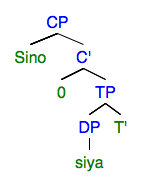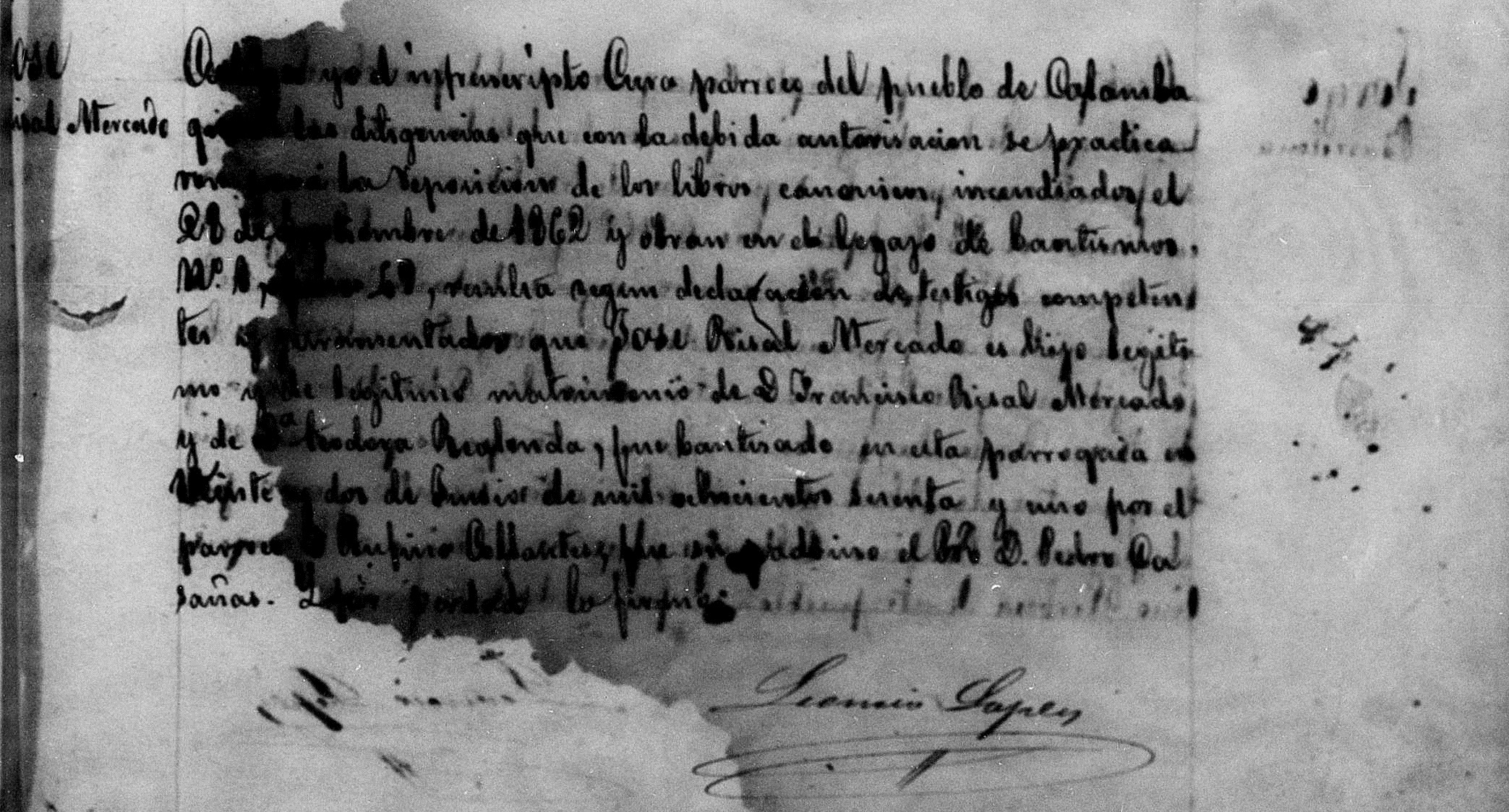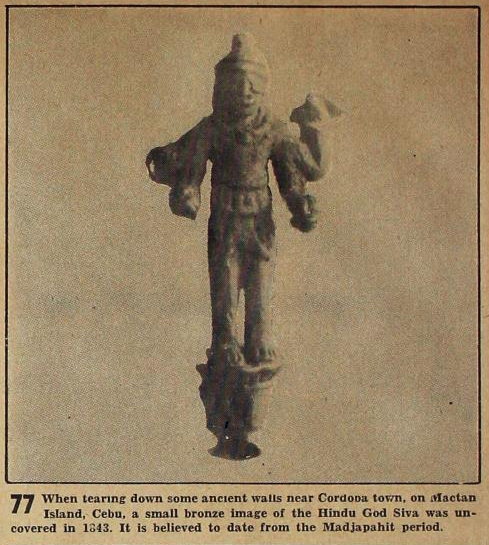|
Lapu Lapu
Lapulapu or Lapu-Lapu (ᜎᜉ̰-ᜎᜉ̰), whose name was first recorded as Çilapulapu, was a datu (chief) of Mactan in the Visayas in the Philippines. He is best known for the Battle of Mactan that happened at dawn on April 27, 1521, where he and his warriors defeated the Spanish forces led by Portuguese explorer Ferdinand Magellan and his native allies Rajah Humabon and Datu Zula. Magellan's death ended his voyage of circumnavigation and delayed the Spanish occupation of the islands by over forty years until the expedition of Miguel López de Legazpi in 1564. Legazpi continued the expeditions of Magellan, leading to the colonization of the Philippines for 333 years. Modern Philippine society regards him as the first Filipino hero because of his resistance to imperial Spanish colonization. Monuments of Lapulapu have been built all over the Philippines to honor Lapulapu's bravery against the Spaniards. The Philippine National Police and the Bureau of Fire Protection use his ... [...More Info...] [...Related Items...] OR: [Wikipedia] [Google] [Baidu] |
Datu
''Datu'' is a title which denotes the rulers (variously described in historical accounts as chiefs, sovereign princes, and monarchs) of numerous indigenous peoples throughout the Philippine archipelago. The title is still used today, especially in Mindanao, Sulu and Palawan, but it was used much more extensively in early Philippine history, particularly in the regions of Central and Southern Luzon, the Visayas and Mindanao. It is a cognate of the title ''ratu'' in several other Austronesian languages. Overview In early Philippine history, datus and a small group of their close relatives formed the "apex stratum" of the traditional three-tier social hierarchy of lowland Philippine societies. Only a member of this birthright aristocracy (called "''maginoo''", "''nobleza''", "''maharlika''", or "''timagua''" by various early chroniclers) could become a datu; members of this elite could hope to become a datu by demonstrating prowess in war or exceptional leadership. In large c ... [...More Info...] [...Related Items...] OR: [Wikipedia] [Google] [Baidu] |
Spanish Empire
The Spanish Empire ( es, link=no, Imperio español), also known as the Hispanic Monarchy ( es, link=no, Monarquía Hispánica) or the Catholic Monarchy ( es, link=no, Monarquía Católica) was a colonial empire governed by Spain and its predecessor states between 1492 and 1976. One of the largest empires in history, it was, in conjunction with the Portuguese Empire, the first to usher the European Age of Discovery and achieve a global scale, controlling vast portions of the Americas, territories in Western Europe], Africa, and various islands in Spanish East Indies, Asia and Oceania. It was one of the most powerful empires of the early modern period, becoming the first empire known as "the empire on which the sun never sets", and reached its maximum extent in the 18th century. An important element in the formation of Spain's empire was the dynastic union between Isabella I of Castile and Ferdinand II of Aragon in 1469, known as the Catholic Monarchs, which in ... [...More Info...] [...Related Items...] OR: [Wikipedia] [Google] [Baidu] |
Honorific
An honorific is a title that conveys esteem, courtesy, or respect for position or rank when used in addressing or referring to a person. Sometimes, the term "honorific" is used in a more specific sense to refer to an honorary academic title. It is also often conflated with systems of honorific speech in linguistics, which are grammatical or morphological ways of encoding the relative social status of speakers. Honorifics can be used as prefixes or suffixes depending on the appropriate occasion and presentation in accordance with style and customs. Typically, honorifics are used as a style in the grammatical third person, and as a form of address in the second person. Use in the first person, by the honored dignitary, is uncommon or considered very rude and egotistical. Some languages have anti-honorific (''despective'' or ''humilific'') first person forms (expressions such as "your most humble servant" or "this unworthy person") whose effect is to enhance the relative honor a ... [...More Info...] [...Related Items...] OR: [Wikipedia] [Google] [Baidu] |
Carlo Amoretti
Carlo Amoretti (born 16 March 1741 in Oneglia, now part of Imperia – died 23 March 1816) was an ecclesiastic, scholar, writer, and scientist. He entered the Augustinian order in 1757. To further his studies, he went to Pavia and Parma where he also taught ecclesiastical law. Wide-ranging intellect Amoretti was an Encyclopedist whose mind encompassed theology, physics, geology, paleography, geography, and art history. He translated scientific works, published or republished many rare books and manuscripts noteworthy of these being the extant codex of Antonio Pigafetta's relation of the first circumnavigation of the world by Ferdinand Magellan's fleet. Amoretti, having fallen from the graces of the ecclesiastical order at Parma, was forced to relocate to Milan around 1771. Here he became an active member of the scientific community. He was editor of the first scientific magazine published in Milan under the title—from 1775 until 1777--''Scelta di opuscoli interessanti tradot ... [...More Info...] [...Related Items...] OR: [Wikipedia] [Google] [Baidu] |
Article (grammar)
An article is any member of a class of dedicated words that are used with noun phrases to mark the identifiability of the referents of the noun phrases. The category of articles constitutes a part of speech. In English, both "the" and "a(n)" are articles, which combine with nouns to form noun phrases. Articles typically specify the grammatical definiteness of the noun phrase, but in many languages, they carry additional grammatical information such as gender, number, and case. Articles are part of a broader category called determiners, which also include demonstratives, possessive determiners, and quantifiers. In linguistic interlinear glossing, articles are abbreviated as . Types Definite article A definite article is an article that marks a definite noun phrase. Definite articles such as English ''the'' are used to refer to a particular member of a group. It may be something that the speaker has already mentioned or it may be otherwise something uniquely specified. ... [...More Info...] [...Related Items...] OR: [Wikipedia] [Google] [Baidu] |
Tagalog Grammar
Tagalog grammar (Tagalog: ''Balarilà ng Tagalog'') is the body of rules that describe the structure of expressions in the Tagalog language, the language of the Tagalog region of the Philippines. In Tagalog, there are nine basic parts of speech: nouns (''pangngalan''), pronouns (''panghalip''), verbs (''pandiwa''), adverbs (''pang-abay''), adjectives (''pang-uri''), prepositions (''pang-ukol''), conjunctions (''pangatnig''), ligatures (''pang-angkop'') and particles. Tagalog is an agglutinative yet slightly inflected language. Pronouns are inflected for number and verbs for focus, aspect and voice. Verbs Tagalog verbs are morphologically complex and are conjugated by taking on a variety of affixes reflecting focus/trigger, aspect, voice, and other categories. Below is a chart of the main verbal affixes, which consist of a variety of prefixes, suffixes, infixes, and circumfixes. Conventions used in the chart: * ''CV~'' stands for the reduplicated first syllable of a root word ... [...More Info...] [...Related Items...] OR: [Wikipedia] [Google] [Baidu] |
Philippine Languages
The Philippine languages or Philippinic are a proposed group by R. David Paul Zorc (1986) and Robert Blust (1991; 2005; 2019) that include all the languages of the Philippines and northern Sulawesi, Indonesia—except Sama–Bajaw (languages of the "Sea Gypsies") and a few languages of Palawan—and form a subfamily of Austronesian languages. Although the Philippines is near the center of Austronesian expansion from Formosa, there is little linguistic diversity among the approximately 150 Philippine languages, suggesting that earlier diversity has been erased by the spread of the ancestor of the modern Philippine languages. Classification History and criticism One of the first explicit classifications of a "Philippine" grouping based on genetic affiliation was in 1906 by Frank Blake, who placed them as a subdivision of the "Malay branch" within Malayo-Polynesian (MP), which at that time was considered as a family. Blake however encompasses every language within the geogr ... [...More Info...] [...Related Items...] OR: [Wikipedia] [Google] [Baidu] |
José Rizal
José Protasio Rizal Mercado y Alonso Realonda (, ; June 19, 1861 – December 30, 1896) was a Filipino nationalist, writer and polymath active at the end of the Spanish colonial period of the Philippines. He is considered the national hero (''pambansang bayani'') of the Philippines. An ophthalmologist by profession, Rizal became a writer and a key member of the Filipino Propaganda Movement, which advocated political reforms for the colony under Spain. He was executed by the Spanish colonial government for the crime of rebellion after the Philippine Revolution broke out; it was inspired by his writings. Though he was not actively involved in its planning or conduct, he ultimately approved of its goals which eventually resulted in Philippine independence. Rizal is widely considered one of the greatest heroes of the Philippines and has been recommended to be so honored by an officially empaneled National Heroes Committee. However, no law, executive order or proclamation ... [...More Info...] [...Related Items...] OR: [Wikipedia] [Google] [Baidu] |
Antonio De Morga
Antonio de Morga Sánchez Garay (29 November 1559 – 21 July 1636) was a Spanish soldier, lawyer and a high-ranking colonial official for 43 years, in the Philippines (1594 to 1604), New Spain and Peru, where he was president of the Real Audiencia for 20 years. He was also a historian. After being reassigned to Mexico, he published the book ''Sucesos de las Islas Filipinas, Sucesos de las islas Filipinas'' in 1609, considered one of the most important works on the early history of the Spanish colonization of the Philippines. As Deputy Governor in the Philippines, he restored the ''audencia.'' He took over the function of judge or ''oidor''. He also took command of Spanish ships in a 1600 naval battle against Dutch corsairs, but suffered defeat and barely survived. His history was first published in English in 1868; numerous editions have been published in English, including a 1907 edition that is online at the Gutenberg Project It has also been reprinted in Spanish and other lan ... [...More Info...] [...Related Items...] OR: [Wikipedia] [Google] [Baidu] |
Resil Mojares
Resil Buagas Mojares (born September 4, 1943) is a Filipino historian and critic of Philippine literature best known as for his books on Philippine history. He is acclaimed by various writers and critics as the ''Visayan Titan of Letters'', due to his immense contribution to Visayan literature. He was recognized in 2018 as a National Artist of the Philippines for Literature - a conferment which represents the Philippine state's highest recognition for artists. Early life and education Mojares was born to parents who were public school teachers on September 4, 1943 in Polanco, Zamboanga del Norte. Mojares has a bachelor's degree in English, a master's degree in Literature and postgraduate studies all at the University of San Carlos, as well as a Ph.D. in Literature from the University of the Philippines Diliman. Career He was one of the first Cebuanos to become a political prisoner during Martial Law, arrested on September 23, 1972, the day Marcos announced that he had placed the ... [...More Info...] [...Related Items...] OR: [Wikipedia] [Google] [Baidu] |
Antonio Pigafetta
Antonio Pigafetta (; – c. 1531) was an Venetian scholar and explorer. He joined the expedition to the Spice Islands led by explorer Ferdinand Magellan under the flag of the emperor Charles V and after Magellan's death in the Philippine Islands, the subsequent voyage around the world. During the expedition, he served as Magellan's assistant and kept an accurate journal, which later assisted him in translating the Cebuano language. It is the first recorded document concerning the language. Pigafetta was one of the 18 men who made the complete trip, returning to Spain in 1522, under the command of Juan Sebastián Elcano, out of the approximately 240 who set out three years earlier. These men completed the first circumnavigation of the world. Others mutinied and returned in the first year. Pigafetta's surviving journal is the source for much of what is known about Magellan and Elcano's voyage. At least one warship of the Italian Navy, a destroyer of the ''Navigatori'' class, wa ... [...More Info...] [...Related Items...] OR: [Wikipedia] [Google] [Baidu] |
Rajahnate Of Cebu
Cebu, or Sugbu, also called the Cebu Rajanate, was an Indianized raja (monarchical) mandala (polity) on the island of Cebu in the Philippines prior to the arrival of the Spanish conquistadors. It is known in ancient Chinese records as the nation of Sokbu (束務). According to Visayan oral legend, it was founded by Sri LumaySantarita, J. B. (2018). Panyupayana: The Emergence of Hindu Polities in the Pre-Islamic Philippines. Cultural and Civilisational Links Between India and Southeast Asia, 93–105. or Rajamuda Lumaya, a minor prince of the Tamil Chola dynasty which occupied Sumatra. He was sent by the maharajah from India to establish a base for expeditionary forces, but he rebelled and established his own independent polity. The capital of the nation was Singhapala (சிங்கப்பூர்) which is Tamil-Sanskrit for "Lion City", the same rootwords with the modern city-state of Singapore. History Foundation of the rajahnate According to Visayan folklore, Sri L ... [...More Info...] [...Related Items...] OR: [Wikipedia] [Google] [Baidu] |







